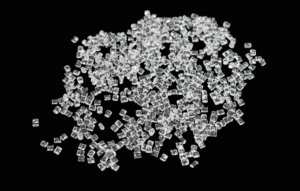Polyester is a ubiquitous material, used by many for its durability and affordability. But what if I told you that this seemingly harmless material might be silently affecting your health and the environment?
Recent studies suggest that polyester could be linked to decreased testosterone levels and fertility issues. This blog will explore the surprising connection between polyester and health, uncovering why natural fibers might be a better option for preserving personal well-being as well as the environment.
Get ready to rethink your wardrobe choices and discover how even a simple change in fabric can make a significant difference in your life and the health of our planet.
The Hidden Dangers of Synthetic Fibers
Synthetic fibers like polyester have become staples in the modern world due to their convenience and lower cost of production. But beneath the surface, these fabrics are posing serious health and environmental risks. One of the most concerning aspects of synthetic fibers is their potential impact on fertility and hormonal balance.
posing serious health and environmental risks. One of the most concerning aspects of synthetic fibers is their potential impact on fertility and hormonal balance.
Static Electricity and Fertility Concerns
The late Dr. Ahmed Shafik conducted groundbreaking research highlighting the negative effects of polyester on reproductive health. Through experiments involving rats, dogs, and humans, Shafik discovered that polyester clothing generated static electricity, interfering with sexual activity and fertility to the point that he considered wearing polyester to be a potential male contraceptive. His findings were controversial but certainly raised important questions about the safety of synthetic fabrics and urge us to seriously consider what we put on our bodies.
Chemical Concerns Around Bisphenol A (BPA)
Another significant issue with polyester is its association with Bisphenol A (BPA), a synthetic chemical commonly used in plastics. BPA can mimic estrogen, leading to disruptions in the endocrine system. When we wear polyester clothing treated with BPA, our skin absorbs this harmful chemical, potentially lowering testosterone levels and contributing to serious health problems.
and contributing to serious health problems.
We have to understand these hidden dangers to start making better decisions about our clothing choices. In the next sections, we’ll explore how exactly polyester can affect health and why natural fibers are a safer alternative.
The Impact of Polyester on Health
Testosterone Levels
Testosterone is a vital hormone that plays a crucial role in defining masculinity and maintaining overall health for both men and women – healthy testosterone levels are necessary for the development of new blood cells. Unfortunately, the BPA found in polyester clothing can interfere with testosterone production. Studies have shown that exposure to BPA can lead to decreased testosterone levels, resulting in several different health issues. Lower testosterone levels can cause reduced muscle mass, increased fat accumulation, emotional dysregulation, fatigue, and, of course, a diminished sex drive.
Fertility Issues
For those planning to start a family, the choice of fabric becomes even more critical. Research has linked BPA in polyester clothing to decreased sperm quality and fertility problems for both men and women. This ubiquitous chemical is a real concern that infiltrates our lives through our everyday garments and affects our most fundamental biological functions. With awareness of these risks, we can take proactive steps to safeguard reproductive health.
As we look deeper into these concerns, it becomes clear that switching to natural fibers can offer substantial health and environmental benefits.
Environmental Issues with Synthetic Fibers
Synthetic fibers, such as polyester, have a significant environmental impact throughout their lifecycle. From production to disposal, these fibers contribute to pollution and resource depletion.
Production and Pollution 
The production of polyester relies heavily on petroleum, a non-renewable resource. The extraction and processing of petroleum release large amounts of greenhouse gases, contributing to climate change. Additionally, the manufacturing process of synthetic fibers involves toxic chemicals, which often leads to water and air pollution.
Microplastic Pollution
One of the most pressing environmental concerns with synthetic fibers is microplastic pollution. When synthetic fabrics are washed, they shed tiny plastic fibers that end up in waterways. These microplastics are difficult to remove from the environment and can harm aquatic life. Over time, they accumulate in the food chain, ultimately affecting human health.

Non-Biodegradability
Synthetic fibers do not biodegrade like natural fibers, meaning they persist in the environment for hundreds of years. This contributes to the growing problem of textile waste in landfills, where these materials take up space and can leach harmful chemicals into the soil and groundwater.
Benefits of Natural Fibers
Natural fibers, such as cotton, wool, and linen, offer numerous health and environmental benefits compared to synthetic materials.
Health Benefits
Natural fibers are free from harmful chemicals like BPA and PFAS (per- and poly-fluoroalkyl substances). By choosing clothing made from these materials, you can significantly reduce exposure to endocrine disruptors and minimize environmental impact.
Natural fibers also do not generate the same static electricity as synthetic fibers, lowering the risk of negative impacts on fertility and hormonal balance. Embracing natural fibers is a simple yet effective way to protect health and the environment.
Comfort and Breathability
Beyond the more serious health benefits, natural fibers offer superior comfort and breathability compared to synthetic materials. Cotton, wool, and linen are known for their softness and ability to regulate body temperature. Wool also does a great job of wicking away moisture, keeping you cool and dry throughout the day. By opting for natural fibers, you promote better overall health and level up your comfort game.
Environmental Benefits
Natural fibers have a significantly smaller environmental footprint than synthetic  fibers. They are biodegradable, meaning they break down naturally without causing long-term pollution. Additionally, the production of natural fibers often requires fewer chemicals and less energy, reducing their overall environmental impact.
fibers. They are biodegradable, meaning they break down naturally without causing long-term pollution. Additionally, the production of natural fibers often requires fewer chemicals and less energy, reducing their overall environmental impact.
Cotton, for example, is a renewable resource that can be sustainably grown and harvested. Wool is another example of a sustainable resource, with sheep shearing being a necessary part of their care. Linen, made from the flax plant, requires minimal water and pesticides, making it one of the most eco-friendly fibers available.
Tips for Choosing Healthier and Environmentally Friendly Clothing
Opt for Natural Fibers
Today there are more and more companies being developed that are dedicated to providing society with more natural clothing. Start by gradually replacing your  polyester clothing with garments made from natural fibers such as cotton, wool, and linen. These materials are not only free from harmful chemicals like BPA and PFAS but are also often more comfortable and breathable. Look for items labeled as 100% natural fibers to ensure you’re making the healthiest and most environmentally friendly choice for your wardrobe.
polyester clothing with garments made from natural fibers such as cotton, wool, and linen. These materials are not only free from harmful chemicals like BPA and PFAS but are also often more comfortable and breathable. Look for items labeled as 100% natural fibers to ensure you’re making the healthiest and most environmentally friendly choice for your wardrobe.
Read Labels Carefully
Make it a habit to read labels when shopping for new clothes. Pay attention to the materials and any treatments the fabric might have undergone. Seek out garments labeled “BPA-free” or “organic” to avoid exposure to harmful chemicals. Being mindful of labels will help you make more informed decisions and ultimately benefit your health and the environment.
Proper Clothing Care
If you can’t completely avoid polyester, take extra care when washing your clothes. Washing polyester garments before wearing them can help remove some of the surface chemicals they’re often treated with. Also, avoid exposing polyester clothes to high temperatures, as this will increase the release of BPA. Using gentle washing cycles and air drying whenever possible helps as well.
Stay Informed and Take Action
Keep yourself updated with the latest research and developments regarding synthetic fibers and their impact on health and the environment. By staying informed, you can make better choices for yourself and your family. A great resource to check out is “Our Stolen Future” by Theo Colborn, Dianne Dumanoski, and John Peterson Myers, which offers great insights into endocrine disruptors and their effects on our health and the planet.
Closing Thoughts
Polyester fabrics may often be used in conventional clothing that is, ironically, either more affordable or more fashionable, but it certainly comes with hidden risks, especially in a world of environmental degradation and health struggles. The impact on hormone levels and fertility from chemicals like BPA and static electricity generated by synthetic fibers is definitely something worth being concerned about. Studies have shown us that prolonged exposure to these materials can disrupt our hormones, leading to decreased muscle mass, increased fat accumulation, mood swings, and diminished sex drive. BPA in polyester also lowers sperm quality and contributes to fertility issues.
By opting for natural fibers such as cotton, wool, and linen, you can protect your health and enjoy the added benefits of breathable materials. Natural fibers tend to be free from harmful chemicals and will not generate the same static electricity as synthetic materials.
Making mindful clothing choices is a simple and effective way to prioritize well-being and environmental sustainability. Start by gradually replacing polyester garments with those made from natural fibers. Pay attention to labels when shopping and choose items labeled as BPA-free or organic. Properly care for your clothing by washing polyester items before wearing them and avoiding high heat exposure whenever possible.
Take action today by reassessing your wardrobe and choosing natural fibers for a healthier, more vibrant life. By making these changes, you enhance your health and contribute to a broader awareness of the importance of natural fibers in health and environmental sustainability. Opting for natural materials is a proactive step towards a healthier and more sustainable lifestyle.









